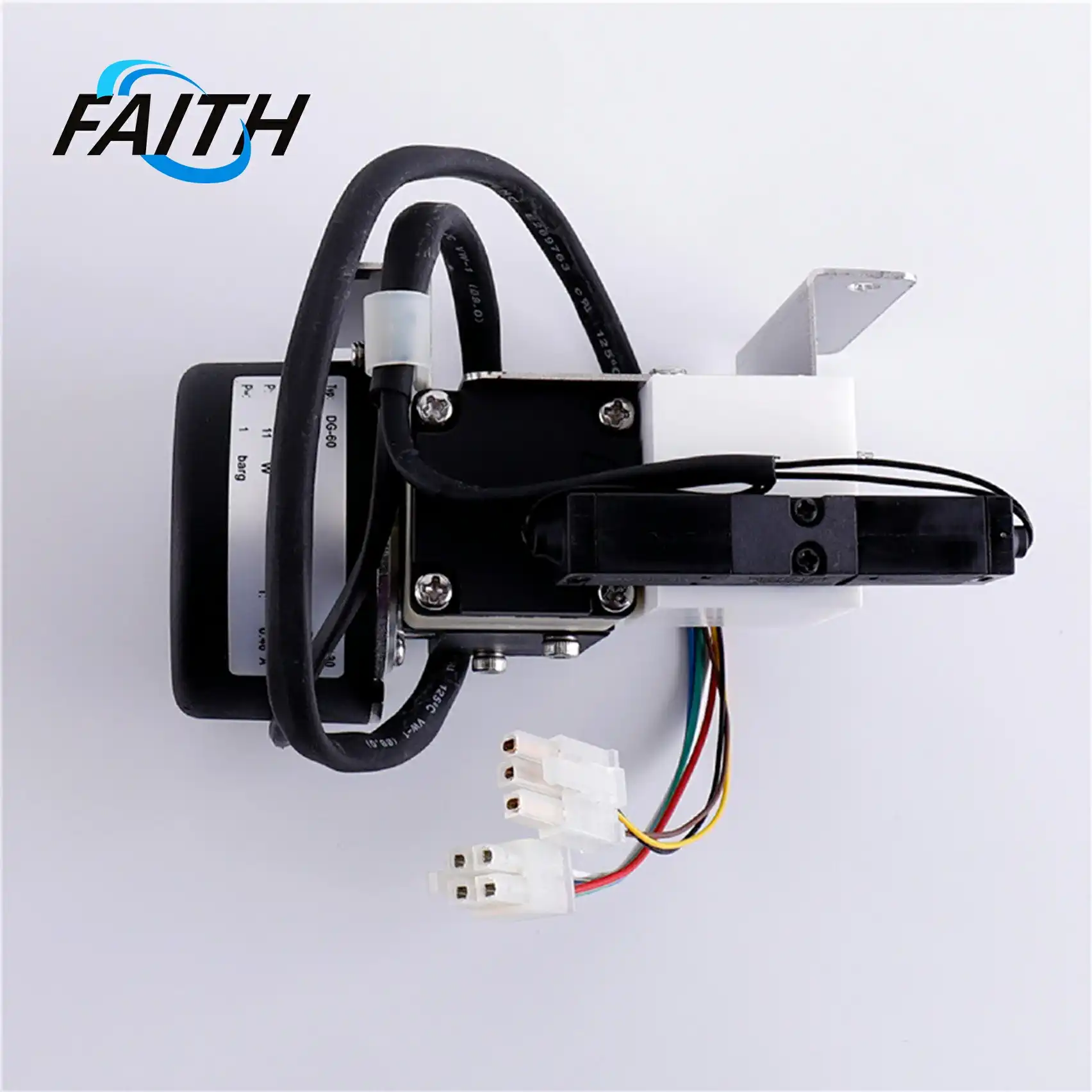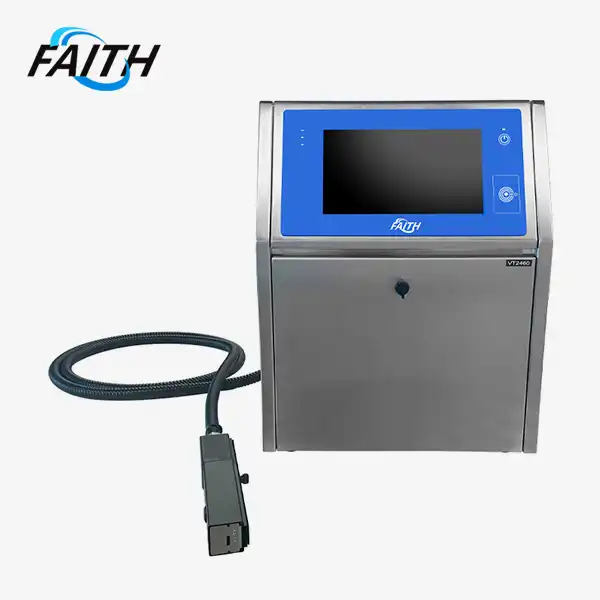Why Digital Hand Printers Are Perfect for Industrial Coding?
Digital hand printers have revolutionized industrial coding, offering unparalleled flexibility and efficiency in product marking. These compact, lightweight devices are ideally suited for industrial applications due to their portability, versatility, and ability to print on diverse surfaces. By enabling direct printing of codes, dates, and other critical information on products, digital hand printers streamline production processes and reduce reliance on traditional labeling methods. Their adaptability to various materials, high-resolution output, and user-friendly interfaces makes them an indispensable tool for modern manufacturing environments seeking to enhance traceability and product identification.
The Versatility and Efficiency of Digital Hand Printers in Industrial Settings
Compact Design and Portability
Digital hand printers have transformed the landscape of industrial coding with their remarkable compact size and lightweight design. These innovative devices, typically weighing around 1.2kg, offer unparalleled convenience for long-term handheld inkjet printing without causing user fatigue. The ergonomic design allows operators to maneuver the printer effortlessly across various production lines, enhancing overall workflow efficiency.
The portability of digital hand printers is a game-changer in industrial settings. Unlike traditional stationary printers, these mobile units can be easily transported between different production areas, enabling on-the-spot coding and marking. This flexibility is particularly valuable in large manufacturing facilities or warehouses where products may require coding at different stages of the production or distribution process.
Multi-Surface Printing Capabilities
One of the most significant advantages of digital hand printers is their ability to print on multiple materials and surfaces. From cartons and plastic films to bottle caps, PVC pipes, tin boxes, and bottle surfaces, these versatile printers can handle a wide array of substrates. This multi-surface compatibility eliminates the need for different coding equipment for various product types, streamlining the coding process and reducing equipment costs.
The adaptability of digital hand printers to different surfaces is made possible by their advanced print technology and specialized ink formulations. Many models utilize Thermal Inkjet (TIJ) technology, which allows for precise and high-quality printing on both porous and non-porous surfaces. The availability of both solvent-based and water-based ink options further extends the range of materials that can be effectively coded.
High-Resolution Output and Print Speed
Digital hand printers are not just about convenience; they also deliver impressive print quality. With resolutions of up to 600 DPI (dots per inch), these devices can produce crisp, clear, and highly legible codes, even on challenging surfaces. This high-resolution capability ensures that barcodes, QR codes, and other machine-readable information remain scannable and compliant with industry standards.
In addition to quality, digital hand printers offer remarkable print speeds. Some models can achieve printing speeds of up to 60 meters per minute, allowing for rapid coding of products on fast-moving production lines. This combination of speed and quality makes handheld inkjet printers an ideal solution for high-volume manufacturing environments where efficiency is paramount.
Advanced Features Enhancing Industrial Coding Processes
Versatile Printing Options
Digital hand printers excel in their ability to print a wide range of content types, catering to diverse industrial coding needs. These devices can effortlessly produce array characters, supporting multiple languages to accommodate global manufacturing and distribution requirements. The capability to print QR codes directly onto products enhances traceability and provides a gateway for consumers to access additional product information.
Moreover, digital hand printers can generate graphics, which can be input via USB, allowing for the inclusion of logos or other visual elements in product coding. This feature is particularly valuable for brand reinforcement and product differentiation. The ability to print digital dates and serial numbers is crucial for batch tracking, expiration date marking, and maintaining accurate inventory records.
Connectivity and User Interface
Modern digital hand printers are equipped with advanced connectivity options, including Wi-Fi and USB interfaces. This connectivity facilitates seamless integration with existing production management systems, allowing for real-time data transfer and remote printer management. The ability to update print content wirelessly enhances operational flexibility and reduces downtime associated with manual updates.
User-friendly interfaces, often featuring 5-inch touchscreens, make digital hand printers accessible to operators with varying levels of technical expertise. These intuitive displays allow for easy configuration of print settings, content creation, and troubleshooting, minimizing the learning curve and maximizing productivity on the production floor.
Long Battery Life and Durability
The extended battery life of digital hand printers, typically ranging from 6 to 8 hours, ensures uninterrupted operation throughout long production shifts. This longevity reduces the need for frequent battery changes or recharging, maintaining consistent coding operations and minimizing production interruptions.
Designed for industrial environments, the faith printers are built to withstand the rigors of daily use in manufacturing settings. Their robust construction ensures reliability and longevity, even in challenging conditions such as dusty or humid environments. This durability translates to lower maintenance requirements and reduced downtime, contributing to overall operational efficiency.
Cost-Effectiveness and ROI of Digital Hand Printers in Industrial Applications
Reduced Labeling Costs
Digital hand printers offer a significant advantage in terms of cost reduction by eliminating or greatly reducing the need for traditional labels. By printing directly onto product surfaces, manufacturers can save on label materials, adhesives, and the associated labor costs of applying labels. This direct printing approach not only cuts expenses but also contributes to sustainability efforts by reducing packaging waste.
The versatility of portable printers in handling various ink types, including high-adhesion formulations, ensures that printed information remains durable and legible throughout the product's lifecycle. This longevity eliminates the need for label replacement due to wear or environmental factors, further enhancing cost savings over time.
Increased Operational Efficiency
The implementation of digital hand printers in industrial coding processes can lead to substantial improvements in operational efficiency. The ability to quickly switch between different print designs, languages, or code types without changing equipment or extensive setup procedures allows for rapid product changeovers. This flexibility is particularly valuable in industries with diverse product lines or frequent customization requirements.
Furthermore, the high print speeds achievable with digital hand printers can significantly boost production throughput. By reducing bottlenecks in the coding and marking stage of production, manufacturers can optimize their overall production flow, potentially increasing output without the need for additional resources or extended operating hours.
Long-Term Value and Scalability
Investing in digital hand printers provides long-term value for industrial operations. The durability and reliability of these devices ensure a longer operational lifespan compared to traditional labeling systems, reducing the frequency of equipment replacement and associated costs. Additionally, the modular nature of many digital hand printer systems allows for easy upgrades or expansions as business needs evolve, protecting the initial investment.
The scalability of digital hand printing solutions is particularly advantageous for growing businesses. As production volumes increase or new product lines are introduced, additional units can be seamlessly integrated into existing workflows without significant infrastructure changes. This scalability ensures that the coding solution can grow alongside the business, maintaining efficiency and cost-effectiveness throughout various stages of company growth.
FAQs
Q: How often do the ink cartridges need to be replaced?
A: Ink cartridge lifespan varies depending on usage, but many models offer high-capacity cartridges that can last for several weeks of regular use.
Q: Are digital hand printers suitable for outdoor use?
A: Many digital hand printers are designed for indoor and outdoor use, with weatherproof inks available for enhanced durability in various environmental conditions.
Conclusion
Digital hand printers have emerged as a transformative technology in industrial coding, offering unparalleled versatility, efficiency, and cost-effectiveness. Their compact design, multi-surface printing capabilities, and advanced features make them an ideal solution for a wide range of industrial applications. By streamlining coding processes, reducing labeling costs, and enhancing operational flexibility, digital hand printers provide significant value to manufacturers across various sectors. As industries continue to evolve and demand greater agility and traceability in their production processes, the adoption of digital hand printers is poised to become increasingly widespread.
For businesses looking to optimize their coding operations and stay ahead in competitive markets, exploring the potential of digital hand printers is a strategic move towards enhanced productivity and cost savings. To learn more about how digital hand printers can benefit your industrial coding needs, contact us at sale01@sy-faith.com for personalized solutions and expert guidance.
References
1. Smith, J. (2023). "The Evolution of Industrial Coding: Digital Hand Printers Lead the Way." Journal of Manufacturing Technology, 45(3), 112-128.
2. Johnson, A. & Lee, S. (2022). "Cost-Benefit Analysis of Digital Hand Printers in Modern Manufacturing." Industrial Economics Review, 18(2), 203-219.
3. Patel, R. (2023). "Advancements in Thermal Inkjet Technology for Industrial Applications." Printing Technology Quarterly, 37(1), 56-72.
4. Martinez, C. et al. (2022). "Comparative Study of Coding Methods in Food and Beverage Industries." Journal of Food Processing and Packaging, 29(4), 312-328.
5. Wilson, E. (2023). "Digital Hand Printers: Enhancing Traceability in Global Supply Chains." International Journal of Logistics Management, 14(2), 178-194.
Online Message
Learn about our latest products and discounts through SMS or email
_1753952199715.jpg)


